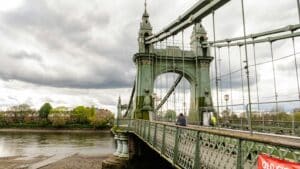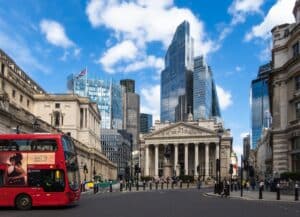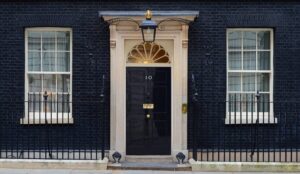Only hardened fans of The Clash will recognise this title as another line from the punk band’s 1979 hit “London Calling”. This might all change though, following the Brexit vote for the UK to leave the European Union when the UK capital voted overwhelmingly to stay in. Joe Strummer and Mick Jones were more worried about a ‘nuclear error’ when they penned this but there is some momentum behind a campaign to grant London ‘Independent City Status’.
Sadiq Khan, London’s new mayor, started lobbying for more devolved power for London more-or-less immediately after the Euro Referendum result was declared and an online petition set up by Londoner James O’Malley has attracted around 180,000 signatures.
And calls for independence for London have some recent history. Just back in 2012, Ken Livingstone, former Mayor of London, was calling for an independent ‘Republic of London’. It is estimated that London generates around £20 billion (€24 billion) more in revenue every year than it receives in terms of public expenditure, so another referendum like the recent one in Venice, which voted for independence from Italy, is just possible. But your columnist’s advice – well, back to The Clash – “Quit holding out and draw another breath”!
Signs of the times
The iconic London Underground sign is changing – but not much. The red circle will remain with the word in a bold blue horizontal stripe across the middle – but the font is to go digital. This small change is necessary to achieve consistency across all branding throughout the capital, according to Transport for London head designer, Jon Hunter. Astonishingly, the existing signage has been unchanged for 100 years with the font designed by Edward Johnson in 1916. In recognition of this, the new font is called ‘Johnston100’ and is almost indiscernibly different, just easier for signmakers and printers to use in a digital world.
The distinctive sign has survived the test of time. In the 1970s there was some divergence when a variety of outside agencies were let loose on promotional material but the strength of the brand, which is instantly recognisable the world over, has now been fully appreciated and looks like it will be around for another 100 years at least.
A day to remember …
June 24, 2016 will be a date that many will remember for the historic EU vote. In London though there were other things going on as usual. Some of us in South West London were left baling out our homes after a month’s rainfall fell in a few hours causing significant flash flooding – and out in East London, well they celebrated the opening of a big slide!
At the Queen Elizabeth Olympic Park, the weird and twisted ArcelorMittal Orbit Tower has had the world’s longest helter skelter wrapped around it like a giant silver python! Costing £3.5 million (€4.1 million), this 178 metre ride will bring you down to earth in 40 seconds at speeds of up to 15mph. All the fun of a water slide – without the water – for just £15 (€17.50).
Better late than never
Asked to name a famous early pioneering nurse, most people will immediately think of Florence Nightingale, but now a statue has been unveiled in London to a nurse who was equally well known at the time, Mary Seacole.
Sitting in the grounds of St Thomas’s Hospital on the embankment opposite the Houses of Parliament, this statue celebrates the life and achievements of this Jamaican-born nurse. Twelve years of campaigning helped raise awareness of Mary Seacole’s incredible work – together with the £500,000 (€585,000) needed for the statue.
Being of Jamaican descent meant that Mary and her family were denied the rights of others at this time but still she came to the UK and volunteered to serve as a nurse in the Crimean War in 1854. Astonishingly, she was turned down but through her own determination still went, setting up the ‘British Hotel’ in Balaclava to nurse wounded soldiers. Without any consideration for her own safety, she also attended personally to wounded soldiers on the battlefields of the Crimea whilst under enemy fire.
‘Mother Seacole’, as she became known, returned to England after the war destitute and in poor health but a heroine nonetheless. In 1857, one of the first recorded ‘benefit festivals’ was attended by thousands of people to raise money for her.
Mary died in Paddington, West London in 1881 and her home is marked with an English Heritage blue plaque. In 2004, she was voted the Greatest Black Briton and now, at last, this is written in stone.
Anyone for … golf?
The City of London would not necessarily be your destination of choice if you fancy a round of Crazy Golf but that is just what is on offer at a new bar and eating venue called ‘Swingers’. Right in the centre of the insurance and financial district, Swingers offers two bespoke Crazy Golf courses, food laid on by some of the capital’s finest street vendors and a range of drinking opportunities including a gin terrace.
Swingers is based on a 1920s classic British golf club and boasts “16,000 square feet of socially competitive fun”. With a name like that, your columnist wonders whether people may turn up expecting an entirely different type of experience but probably altogether more suitable for the next office party!
Not In the Pink
A homeowner in Belsize Park, North London has run into trouble with planning officials at Camden Council who say her house is ‘too pink’! Well actually too ‘dark pink’. The four-storey house is in a conservation area, though not believed to be listed and the council is saying she must apply for retrospective planning permission to change the colour. They are now considering whether or not the property owner needs to repaint the house.
Meanwhile, over in a posh South Kensington garden square, another row about a gargantuan basement development rolls on. Eight years ago, work began on this underground palace to include a swimming pool, spa and car lift but the property was seized by receivers when the owner went to jail.
Now the new owners have submitted new plans but it will be at least two-and-a-half years before the work is complete. By then, neighbours have suffered noise, disruption and even subsidence for over a decade. When it is finished, the house may be worth £50 million (€59 million) – no gain without pain!
By Richard Lamberth

























